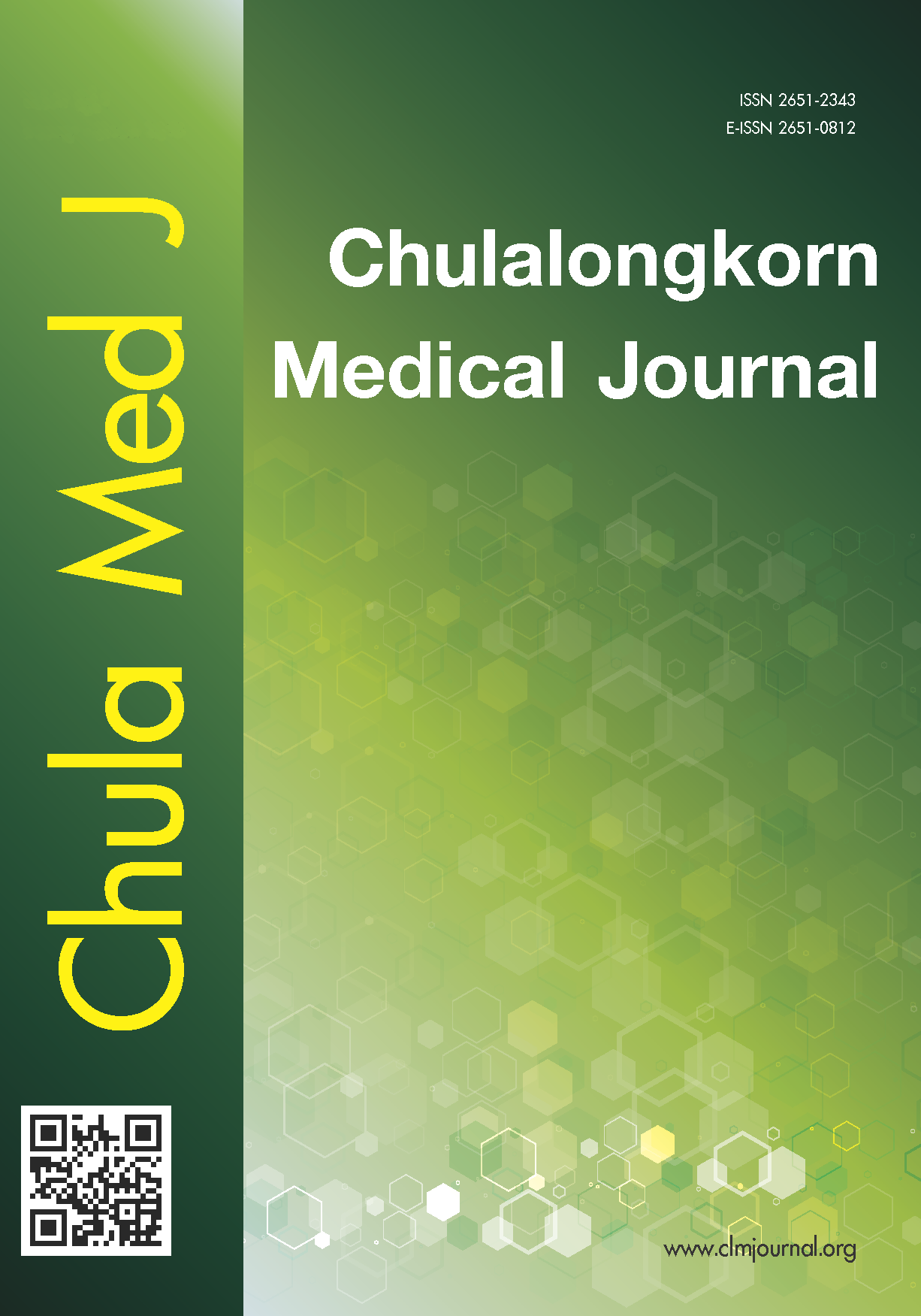Prevalence of hypertension and associated factors among healthcare workers: A cross-sectional study
Main Article Content
Abstract
Background: Hypertension is an important public health challenge in Thailand. Whether shift work and types
of working patterns in healthcare workers is linked to increased risk of high blood pressure remains controversial. The aim of this study was to quantify the prevalence of hypertension and to determine the effect of shift work and working patterns in healthcare workers of a large tertiary, university-based hospital in Bangkok, Thailand.
Methods: A cross-sectional study was conducted using the annual health examination results and occupational health questionnaires of 6,014 healthcare workers at a large tertiary, university-based hospital. Sleep quality was measured using the Pittsburgh Sleep Quality Index (PSQI). Associations between hypertension and independent variables based on demographic data, work shift status, and working patterns were assessed using the logistic regression models.
Results: The prevalence of hypertension in healthcare workers was 39.3%. After adjusting for other possible
confounders, healthcare workers aged > 50 years had 5.41 fold increased odds of having hypertension, in
comparison with healthcare workers aged < 30 years (adjusted OR (aOR) = 5.41; 95% CI 4.47 to 6.55). Healthcare workers with obesity (body mass index (BMI) 30 kg/m2) had 14.34 fold increases odds of having hypertension, in comparison with healthcare workers BMI < 18.5 kg/m2 (aOR=14.34; 95% CI 10.16 to 20.22). Healthcare workers who did shift work, the odds of having hypertension increased by 23%, in comparison with healthcare workers with no shift work (aOR = 1.23; 95% CI 1.03 to 1.48). There were no significant associations between hypertension and working patterns including working hours a day, number of night shifts a month, and the rest interval hours a day.
Conclusions: Shift workers had heightened risks for hypertension compared to the day workers, and the increase of risk was especially marked in workers with higher age, especially higher BMI. No working pattern factors were significantly associated with hypertension.
